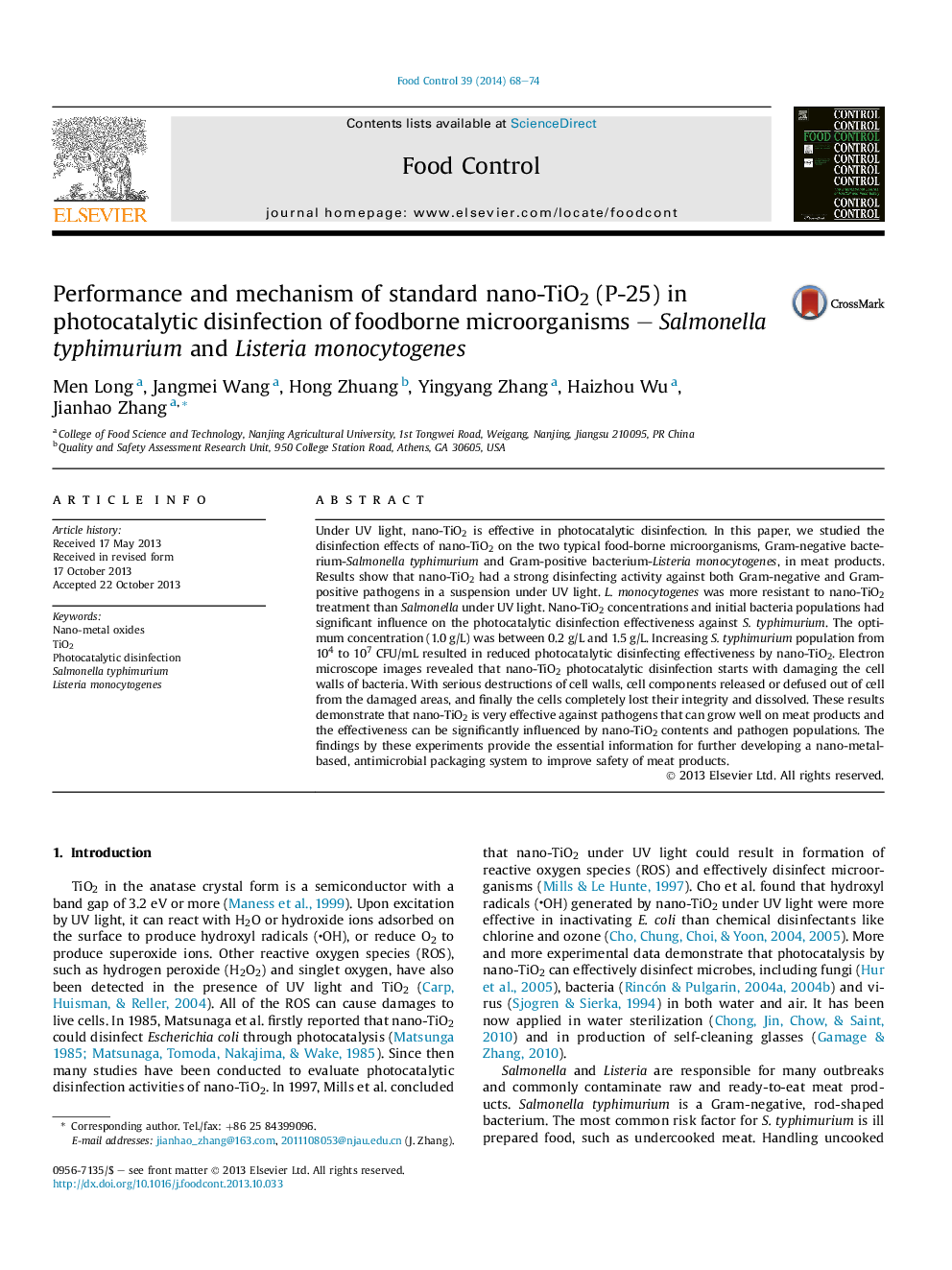| کد مقاله | کد نشریه | سال انتشار | مقاله انگلیسی | نسخه تمام متن |
|---|---|---|---|---|
| 6391968 | 1628423 | 2014 | 7 صفحه PDF | دانلود رایگان |

- We studied disinfection effects of nano-TiO2 on two food-borne microorganisms.
- TEM was used to analysis antimicrobial mechanism by nano-TiO2 under UV light.
- Nano-TiO2 is very effective against pathogens that can grow well on meat products.
- The findings can further develop a nano-metal-based, antimicrobial packaging system.
Under UV light, nano-TiO2 is effective in photocatalytic disinfection. In this paper, we studied the disinfection effects of nano-TiO2 on the two typical food-borne microorganisms, Gram-negative bacterium-Salmonella typhimurium and Gram-positive bacterium-Listeria monocytogenes, in meat products. Results show that nano-TiO2 had a strong disinfecting activity against both Gram-negative and Gram-positive pathogens in a suspension under UV light. L. monocytogenes was more resistant to nano-TiO2 treatment than Salmonella under UV light. Nano-TiO2 concentrations and initial bacteria populations had significant influence on the photocatalytic disinfection effectiveness against S. typhimurium. The optimum concentration (1.0 g/L) was between 0.2 g/L and 1.5 g/L. Increasing S. typhimurium population from 104 to 107 CFU/mL resulted in reduced photocatalytic disinfecting effectiveness by nano-TiO2. Electron microscope images revealed that nano-TiO2 photocatalytic disinfection starts with damaging the cell walls of bacteria. With serious destructions of cell walls, cell components released or defused out of cell from the damaged areas, and finally the cells completely lost their integrity and dissolved. These results demonstrate that nano-TiO2 is very effective against pathogens that can grow well on meat products and the effectiveness can be significantly influenced by nano-TiO2 contents and pathogen populations. The findings by these experiments provide the essential information for further developing a nano-metal-based, antimicrobial packaging system to improve safety of meat products.
Journal: Food Control - Volume 39, May 2014, Pages 68-74